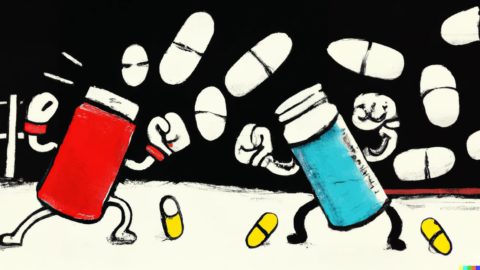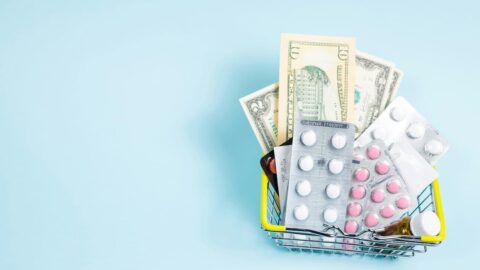Writing today from the lovely city of Minneapolis, where I am staying in a hotel in which every single room has a replica Herb Brooks sportcoat hanging on the wall. Here’s to a wonderful weekend. After all, as Herb once said, “Great moments are born from great opportunity.”
Every once in a while, a politician or other wag will ask themselves a question: if the government just took over drug development could we create drugs more inexpensively and reduce costs for Americans?
I can understand why it’s an attractive thought experiment. Squeezing profits out of the whole endeavor is appealing!
But anyone who has seen the process of discovering, developing, and introducing a new medicine up close knows that it’s a silly concept. Drug R&D is an expensive and uncertain proposition, and the government doesn’t do “expensive and uncertain” very well.
So I was thrilled to see a paper in the Journal of Medical Economics, led by Duke’s Henry Grabowski and including some thinkers from J&J, that takes a hard, data-driven look at whether the government could take over drug development.
The conclusion is fairly compelling: it would indeed be massively expensive — 25 times what the NIH currently spends on clinical trials — and upending the whole incentive structure in favor of directed prizes or other pre-determined rewards is likely to eliminate a lot of the serendipity that powers industry innovation.
The paper is worth the read, even if you are inclined to agree with the conclusions, in part because it also does some math on the fraught questions of what it costs to bring a medicine to market. Those figures come in at $2.83 billion uncapitalized ($4 billion capitalized). That’s higher than some past estimates, in part because the group uses updated figures on clinical trial success rates.
One of the red-letter days for me each year is the release of Gallup’s industry reputation ratings. The pharmaceutical industry has historically not looked good, though the extent of the “not good” bounces around from year to year.
It may seem ironic that I, of all people, look forward to these numbers. But it’s an important reality check.
Objectively, there’s a lot to celebrate. Approval numbers look strong. We’ve seen some absolutely stunning scientific advances. Net prices have fallen for six straight years. Growth in list prices hasn’t been far off from overall inflation.
And yet … the percentage of Americans who view the industry positively is at 20%. The happy spin here is that 20% is a couple of percentage points higher than the 18% seen last year. The not-so-happy spin is that this is the second-lowest favorability number that the industry has seen in a quarter century.
It’s easy to spin theories on what’s going on. The numbers may be a lagging indicator of reputation, reflecting some of the controversies in the late 2010s (e.g. the long shadow of Martin Shkreli). Maybe it’s the rising out-of-pocket costs that are pushing pharma’s rep down**. Objections to the IRA probably didn’t help.
The path forward for pharma is easy to describe and hard to implement.
It starts with education about how the health care system works. There’s a gap around public understanding of where drug prices come from and how price intersects with value and patient needs. Ever-larger doses of transparency would help. So would attention to avoiding self-inflicted wounds. And the industry needs to show where and how it’s fighting against policies that harm patients and employers, from copay accumulators to 340B-related price hikes to access hurdles.
I didn’t just fall off the turnip truck. This is a tall order, and public opinion doesn’t turn on a dime, even when execution is flawless. (Remember, the pharma industry essentially innovated the world out of the pandemic, and credit there was fleeting at best.)
But — much like planting a tree — the best time to go all-in on reputational repair was 20 years ago. The second-best time is now.
** The “healthcare” industry — insurance companies and the like — fell four percentage points, to 31%. So no one likes those folks, either. But it’s not a zero-sum game. Most Americans can, and do, think poorly of pretty much everyone in the health system.
The National Community Pharmacists Association said that the payment processes detailed in the final guidance for the next round of the IRA price controls are such a risk to pharmacy finances that 92% of those who responded to its “informal poll” are considering not stocking medicines with “negotiated” prices.
The state of Texas is going after drug companies and PBMs for insulin pricing practices. I really have no idea about these state and local lawsuits. I will happily amplify anyone who can send me a link explaining what’s at stake here or what the range of likely outcomes might be.
You heard it here first on the CBO report on what it’ll cost to fund/shore up the new Part D benefit, but the media finally took notice yesterday. Here are links to Axios and STAT. And here’s the angry press release from Senate Republicans. This issue ain’t going away.
Header image via Flickr user Eusebio Perdiguero.
Thanks for reading this far. I’m always flattered when folks share all or part of Cost Curve. All I ask is for a mention or tag. Bonus points if you can direct someone to the subscription page.





